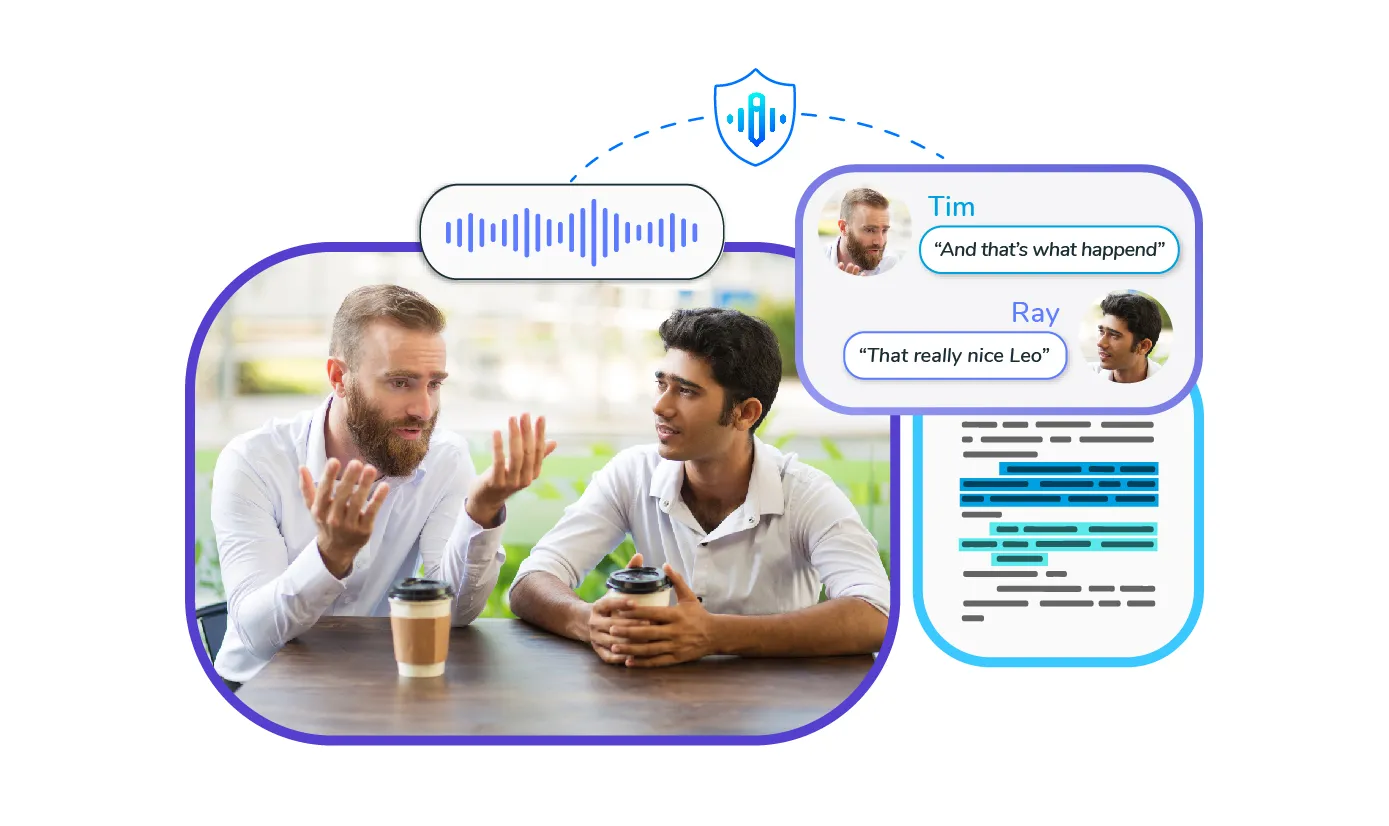The rise of AI has ushered in significant changes to transcription services. One of the major developments has been automatic speech recognition technology, also called AI transcription. In simple words, a machine recognizes, interprets the speech of a human, and replicates it in the same language, even if it doesn’t understand it.
With the demand for transcription swelling up in recent years, the question arises :
Is AI-powered transcription better than Human transcription?
Will AI-based transcriptions replace traditional human transcribers?
First, let’s understand – What is Transcription?
The text form of an audio file, be it a video or recorded interview, is a transcription. Transcripts generally include spoken words in addition to extra details like pauses in dialogues, background noises, or music. Utilizing video interview software enhances the transcription process, allowing users to convert spoken content into written text efficiently. In the case of text transcriptions, viewers can read and fully understand the audio via text format. Text transcriptions are usually helpful for people with hearing difficulties or in circumstances where it is unbefitting to watch a video with the audio on.
What is Human Transcription?
Human transcription is done by real people wherein a professional listens to an audio file and converts it into written text. When it comes to language, there are always unique challenges in the form of different dialects, accents, and various speaking styles – conversational, formal, etc. A professional human transcriber can navigate through the intricacies of language better than AI.
What is AI-based Transcription?
AI transcription utilizes speech recognition software to translate audio into text. The software is fed with high-quality datasets to build a robust algorithm to process more data quickly. Auto-captions on YouTube, dictation on tablets or computers, and talk-to-text on smartphones are all examples of voice-to-text technology.
Human Transcription Versus AI-based Transcription
Both human transcriptionists and AI transcription have their positives. When it comes to choosing between the two, it depends on your primacies and the nature of the workflow. Accuracy, time, and budget are some of the defining factors.
Let’s dive right in to check out these factors:
1. Accuracy
All clients demand accurate work. The accuracy rate of transcription indicates the percentage of errors per word count. For example, an accuracy rate of 99% of a transcription specifies a 1% chance of error, meaning about 15 errors every 1,500 words.
In the case of any language, clarity, context, diction, and nuances play a crucial role. The intended message can diminish or distort meaning if the readers misunderstand the text. Conveying inaccurate information can lead to confusion or even loss of face for the company resulting in huge losses. For example, in the legal, medical world or market research for a company’s products, one error in the transcript can prove detrimental to the company.
Human transcribers are commonly more accurate than AI transcription. This is because a human can comprehend the context, take note of punctuation marks, understand slang words and nuances, identify multiple speakers talking over one another, and separate any background noise that may interfere with the speech.
AI technology does not enjoy all these privileges yet. The accuracy of AI transcriptions is getting better and better with advancements in AI speech recognition technology. Yet, more work needs to be done to understand human speech with its complexities to precisely capture the meaning and accurately translate it. AI technology relies on algorithms to recognize phrases and words and, at times, can misinterpret the context of the matter. Moreover, the AI software can be amended only after a mistake is committed and corrected.
2. Time
AI-based transcriptions can put speech into text faster than human transcriptionists. AI-powered software possesses speech recognition intelligence that can automatically transcribe large audio files in real-time quickly as compared to human professionals. Also, it doesn’t require any breaks and, if necessary, can work round the clock. In this way, it’s a time saver resulting in faster project turnaround. This allows additional freed time for a company to focus on more vital facets like growth, sales, etc.
3. Budget
AI transcription is commonly much cheaper than human transcriptions. Human transcription entails professionals with a specific skill set at a considerable cost. Think wages and benefits of the transcription team, overheads, etc. Besides, AI transcription doesn’t need to be paid per hour and involves fewer operational costs.
Choose AI Transcription if you have:
- Limited time
- Have a limited budget
- Audio is evident with one or two speakers
- Possess editing capabilities to ensure higher levels of accuracy
Choose Human Transcription Services if you want:
- Higher accuracy
- Better clarity
- Flexible prices
- No time for editing
- Audio involves multiple speakers, thick accents, heavy background noises
The need for transcription is more significant with a boom in audio and video content. While AI transcription can undertake most heavy-duty work efficiently, quickly, and profitably, the technology is not perfect. Thus, human transcribers will continue to play a vital role. Businesses can stand to gain a competitive edge by using professional transcriptionists supported by sophisticated AI solutions to further their growth agenda across different realms and roles.

.webp)










